


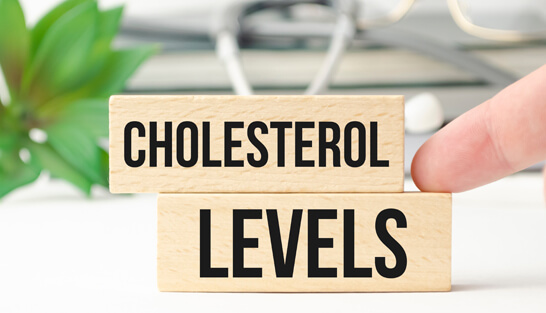
Let us first attempt to comprehend what Cholesterol is and how it affects our health.
We need a balanced diet to ensure our bodies receive the necessary nutrients. However, too much of anything can distort the balance and have several unintended consequences.
Moreover, you risk acquiring difficulties from them when you combine them with other habits like not exercising or having other health problems.
Cholesterol is a lipid or fat that is waxy in texture and is either produced by or obtained from food. Cholesterol is produced by our bodies to assist in the layering of cell membranes. For example, bile, which aids in food digestion, is made from the Cholesterol our liver produces. Steroid hormones produced by Cholesterol, such as estrogen, progesterone, and vitamin D, are also significant. Therefore, even though the body needs a certain level of Cholesterol, too much Cholesterol can clog our arteries, which can cause heart attacks, strokes, and other vascular issues.
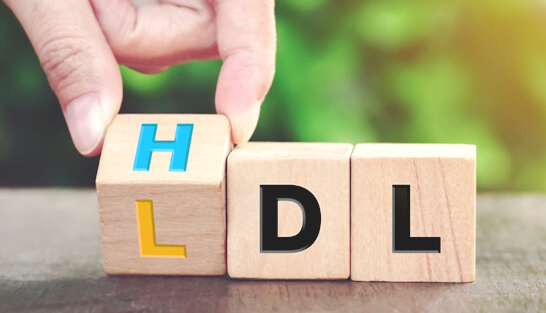
Fats or lipids and Cholesterol stay undissolved in water and therefore, they move in our body through lipoproteins in the blood. There are mainly three types of lipoproteins:
Low-density lipoprotein (LDL)
is one of the two main lipoproteins, also known as “the bad cholesterol.” From the liver to the rest of the body, Cholesterol is transported by lowdensity lipoproteins (LDL). These particles are captured by cells, which take the fat and Cholesterol out of them. As a result, the walls of the coronary arteries and other arteries throughout the body might develop deposits when excessive LDL cholesterol is in the blood. These “plaque” deposits can constrict arteries and reduce blood flow. In addition, a heart attack or stroke may result from plaque fragmentation. As a result, LDL cholesterol is frequently referred to as detrimental or harmful.
High-density lipoprotein (HDL)
is the other primary lipoprotein known as “the good cholesterol.” High-density lipoproteins (HDL) transport cholesterol back to the liver for elimination after removing it from the circulation, LDL, and arterial walls. Consider HDL as the bloodstream’s cleaners. The term “healthy” or “protective” Cholesterol is frequently used to describe HDL cholesterol.
Very low-density lipoproteins (VLDL)
carry triglycerides. As a result, most of the fat you consume that is absorbed into your bloodstream is made up of triglycerides. Triglycerides are essential for optimum health since they are the body’s primary means of delivering fats to cells, yet having too much can be harmful.
Trans-Fats
Saturated and trans fats are fats related to elevated LDL cholesterol levels that you should try to limit in your diet. At room temperature, saturated fats are solid or waxlike. Saturated fats are primarily found in foods coming from animals, including meat, milk, cheese, and butter.
When liquid fats undergo the hydrogenation process to solidify, trans fats result. Trans fats are utilised to increase the shelf life of processed foods like cookies, crackers, and baked goods and are present in fast food and fried dishes.

Blood Cholesterol Levels and How They Are Affected by Food Fat and Cholesterol
The amount of total HDL and LDL cholesterol in the bloodstream is influenced by the types of fat consumed. In addition, the kinds and quantities of carbohydrates consumed also have an impact. Therefore, food-based Cholesterol has some effect on raising cholesterol levels.
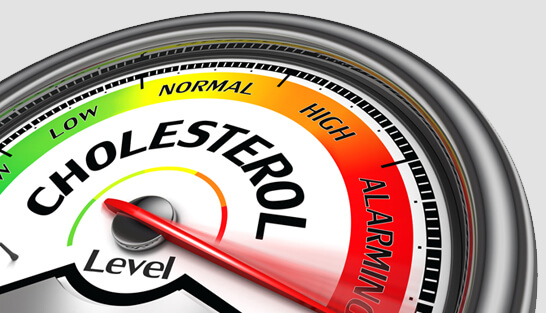
Your chance of having High Cholesterol can be influenced by your lifestyle choices.
High Cholesterol and associated illnesses, such as heart disease, may be brought on by eating a diet rich in saturated and trans fats.
Lack of physical exercise can cause weight gain, resulting in elevated Cholesterol.
Your blood vessels are harmed by smoking, which increases the likelihood of fatty deposits forming there. High-density lipoprotein (HDL, or “good”) cholesterol levels may be decreased by smoking. Stop smoking to foster HDL.
The good news is that you can reduce your risk of high Cholesterol by engaging in healthy behaviours.
A family health history is a list of the illnesses and ailments in your family. Understanding health risks and preventing sickness can be done with the help of family medical history.
Familial hypercholesterolemia is a genetic disorder affecting some people (FH). This disorder generates exceptionally high levels of low-density lipoprotein (LDL, or “bad”) cholesterol, which, if left untreated, continue to worsen with age.
Consult your medical practitioner about your family’s risk for FH and whether testing is necessary if someone in the family suffers a heart attack at a young age.
Your doctor may discuss lifestyle modifications you might need to implement to help reduce or manage your cholesterol levels. However, FH is frequently untreatable by way of lifestyle modifications alone. To lower your cholesterol levels, you might need medication, such as statin therapy or another type of medication.
Family members frequently share behaviours, lifestyles, and settings that might affect their health and their risk for heart disease, high Cholesterol, and other related disorders. They also frequently share genes.
You are more likely to develop high Cholesterol if your family has a history of it in comparison to persons who do not have a family history of high Cholesterol. Therefore, you might need to get your Cholesterol levels checked more frequently.
When unhealthy lifestyle choices, such as eating an unhealthy diet, are combined with a family history of high Cholesterol, the risk for high Cholesterol can rise even further.

Although a high blood cholesterol level doesn’t necessarily create any noticeable symptoms, it can raise your risk for illnesses like angina (chest discomfort brought on by heart disease), High Blood Pressure, stroke, and other circulatory problems.
Excessive Cholesterol may be indicated by xanthomas, which are soft, yellowish skin growths or lesions.
High Cholesterol is common in those who are obese or diabetic.
Impotence in men may result from arteries that have too much blood cholesterol.
Since high Cholesterol doesn’t have any symptoms, many people are unaware that they have elevated Cholesterol. Too-high cholesterol levels increase the risk of acquiring heart disease and, if you already have it, increase the likelihood of a heart attack.
Diagnosis and Tests
Your doctor will typically request a quick blood test called a lipoprotein profile to determine your cholesterol level.
The lipoprotein profile assesses the following:
In addition to the blood tests, your doctor will conduct a thorough physical examination that includes monitoring your Blood Pressure, talking to you about your medical history, and checking your heart rate and heartbeat.
Your doctor will advise various treatment choices, ranging from dietary and lifestyle modifications to medication to lower your Cholesterol if you have High Cholesterol, particularly if you also have other heart disease risk factors.
Target Blood Glucose Levels for Diabetics:
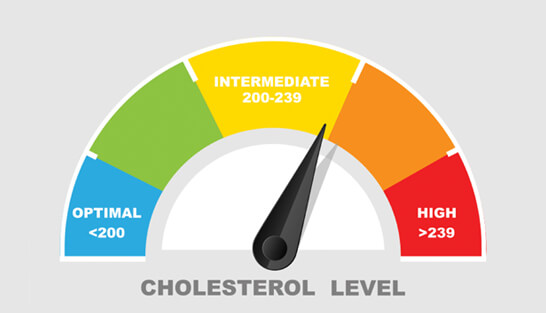
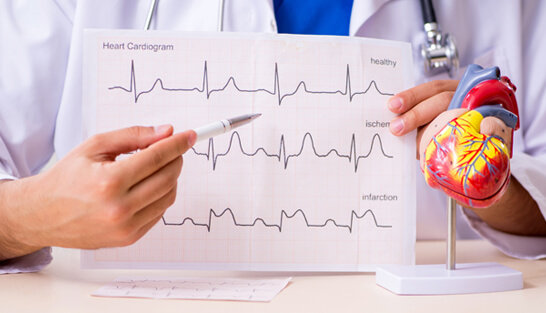
The primary goal of treating excessive Cholesterol is to prevent or reverse Coronary Heart Disease (CHD), also known as Coronary Artery Disease (CAD). Coronary Heart Disease can be a leading cause of death and occurs when the heart does not receive enough oxygen-rich blood to function correctly. The term “CHD” typically refers to the big arteries, although a condition known as coronary microvascular disease can also harm the small blood vessels.
Peripheral Artery Disease is when the same plaque that can give you a heart attack builds up in arteries that lead to other body parts. It can cause severe discomfort, cramps and tiredness.
There are other complications to having High Blood Cholesterol levels.
High Cholesterol can lead to High Blood pressure. In addition, the narrowing of the arteries due to plaque deposits causes the Blood Pressure to rise as the blood vessels have to work harder to keep the blood flowing.
Chronic Kidney Disease is another complication that can arise from Cholesterol. The blockages in arteries over time make the kidneys deprived of oxygen, causing irreversible damage. Blocked arteries leading to the kidneys cause high Blood Pressure that does not respond well to drugs.
The longer you have Cholesterol, the higher your risk for heart disease.
High Cholesterol in the digestive fluids may crystallise, eventually hardening into stones in your gall bladder. These can be extremely painful and sometimes need to be removed surgically.
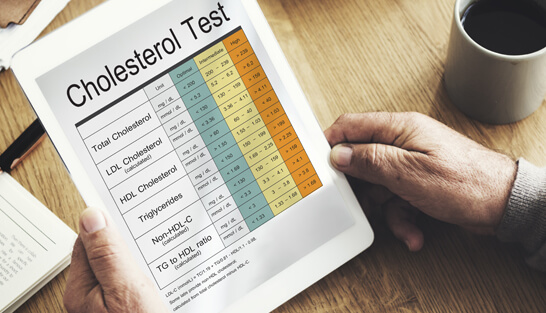
Up to midlife (ages 50 to 60), when the gap starts to close following menopause, women have a lower atherosclerotic cardiovascular disease risk than men. Triglycerides (TG), low-density lipoprotein cholesterol (LDL-C), and total cholesterol (TC) blood values in older women are higher than those in men. Menopause itself, independent of chronological age, is linked to a higher prevalence of dyslipidaemia but not hypertension or insulin resistance.
Treatment for Cholesterol
You should take action to lower your Cholesterol since it can increase your chance of developing heart disease, having a heart attack, or having a stroke. High Cholesterol can be treated with healthy lifestyle modifications like diet, exercise, weight loss, and, occasionally, medicines.
Your cholesterol treatment programme is customised for you depending on:
Your individual High Cholesterol treatment goals are determined based on your health and cardiac risk or the danger of having a heart attack or stroke within the next ten years. Your doctor can assess your heart risk using a calculation.
Coronary Heart Disease
The small blood arteries that carry oxygen and blood to the heart constrict due to coronary heart disease. Coronary Artery Disease (CAD) is another name for coronary heart disease (CHD).
Plaque accumulation in the arteries leading to your heart is what causes CHD. The arteries hardening is another name for this.
The walls of your coronary arteries develop a plaque accumulation from fatty material. Your heart receives blood and oxygen from the coronary arteries. The arteries become narrower due to this deposition. Blood flow to the heart may consequently decrease or cease. Anything that raises your chances of developing heart disease is a risk factor.
Symptoms
In some circumstances, symptoms may be pronounced. However, it’s possible to have the illness and not show any signs. This is more frequently the case in the early stages of cardiac disease.
The most typical symptom is angina or pain or discomfort in the chest. When the heart is not receiving enough blood or oxygen, you experience this agony. Each person may experience pain differently.

Your heart can feel heavy or as though it is being squeezed. The pain will be felt under your breastbone (sternum). It might also be felt in your upper back, stomach, arms, neck, or hands. Movement brings on the pain. Rest helps it go away. Shortness of breath and activity tiredness are further signs (exertion).
Other signs and symptoms that some people experience include:
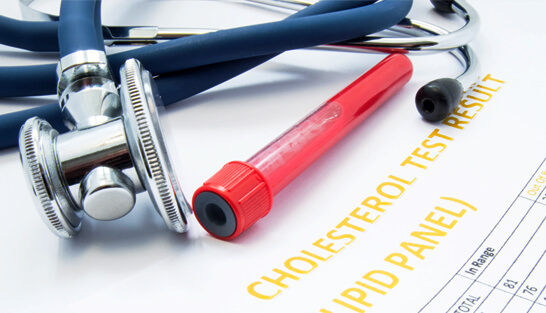
Tests and Exams
You will be examined by a medical professional. Before receiving a diagnosis, more than one test is frequently required.
Among the tests to look for CHD are:
Prevention
Take these actions to assist in heart disease prevention:
Taking these actions will help you even if you already have heart disease.
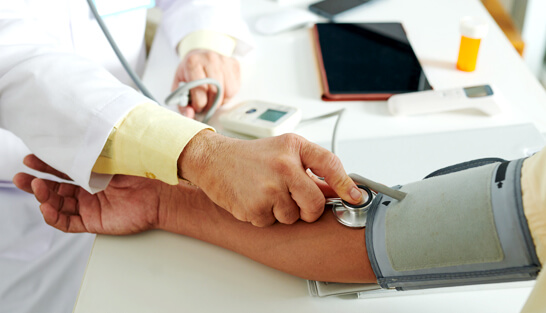
Often having one condition can lead to other diseases. Heart diseases are no exception and one or having more than other diseases can eventually lead to complications related to the heart.
Here are a few Heart Diseases that are linked to High Cholesterol.
The plaque build-up due to High Cholesterol is the major factor and people have been known to be at a higher risk for Cardiovascular diseases like coronary heart disease, stroke, and peripheral vascular disease.
There is also a higher risk of developing Atherosclerosis which in turn can lead to a stroke or heart attack.
To sum up, Coronary Heart Disease or CHD as it is also known starts silently due to chronic inflammation resulting from factors like stress, oxidation injury, chronic infection and conditions like hypertension, Diabetes and High Cholesterol.
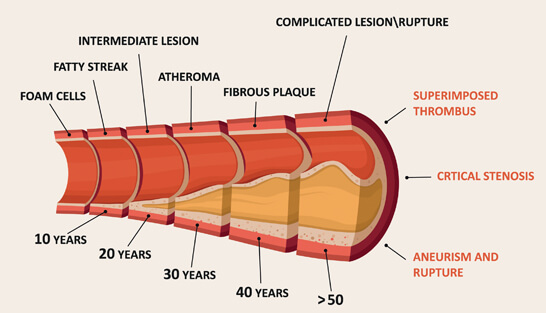
The plaque or fatty deposits in your arteries mainly made up of cholesterol, cellular waste, fatty substances, calcium and fibrin, is called Atherosclerosis. It is the hardening of arteries. The build-up of plaque thickens the blood vessels narrowing the channel within the arteries and thus causing a reduction in the blood flow. This, in turn, lessens the amount of oxygen and other nutrients reaching the body. The development of plaque is different in each person and various types of arteries may get blocked. This can partially or fully block the flow of blood through large or
medium-sized arteries, causing conditions like:
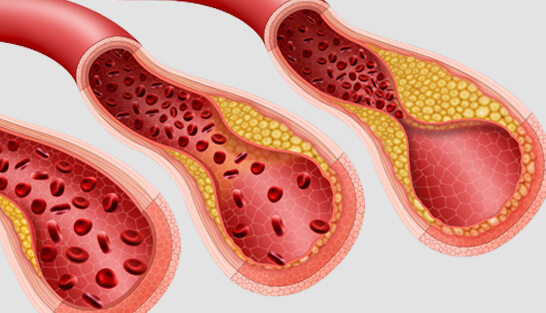
The plaque itself is a considerable risk. If a piece of plaque breaks off, it can get carried in the bloodstream; if it gets lodged in an artery, it can cut off blood flow. Also, arteries that get narrowed due to plaque can lead to thrombus or, in simple words, blood clot. If these arteries happen to be the ones that supply blood to the heart or brain, it can be one of the causes of heart attack or stroke. If the artery supplies blood to extremities, the depleted oxygen often can cause gangrene or tissue death.

Hyperlipidemia is essentially various genetic and acquired disorders that describe elevated lipid levels within the body. Hyperlipidemia is broadly divided into two categories: primary (familial) or secondary (acquired) hyperlipidemia. Primary or familial Hyperlipidemia is inherited by birth, whilst secondary Hyperlipidemia is, as mentioned, acquired due to unhealthy eating patterns, hypothyroidism, uncontrolled diabetes, obesity, chronic renal failure, nephrotic syndrome and also age.
It is a chronic, progressive disease that can contribute to the evolution of Atherosclerosis and consequent vascular disorders.
It is a very common disease and the term is often interchangeable with High Cholesterol.
Polygenic in inheritance, this disorder can be caused by combined genetic and environmental factors.
It can also stimulate inflammatory problems like:Psoriasis
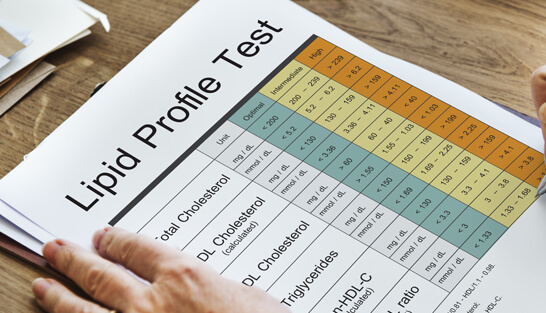
Tests to determine Hyperlipidemia

Treatment
By lowering LDL cholesterol, one can lower Hyperlipidemia, thus lowering the chances of cardiovascular diseases and reducing the risk of acquiring other heart-related diseases.
Though Hyperlipidemia is a life-long disease, it is manageable with medications, diet and lifestyle changes. But untreated Hyperlipidemia can lead to complications such as Coronary Artery Disease, Peripheral Artery Disease, Cerebrovascular Accidents, Aneurysms, Type II Diabetes and High Blood Pressure.
Now that we have discussed at length the causes, symptoms, complications, tests and treatments for High Cholesterol, we should not ignore the slightest signs and do annual tests to check for blood cholesterol levels. Discussing these tests with a physician and keeping him appraised of the health condition will go a long way in early diagnosis. In addition, this will help one keep better control over the disease.
So do not hesitate or hold back in enjoying life but do it responsibly, keeping in mind that you are either inviting or keeping the diseases at bay by what you do.